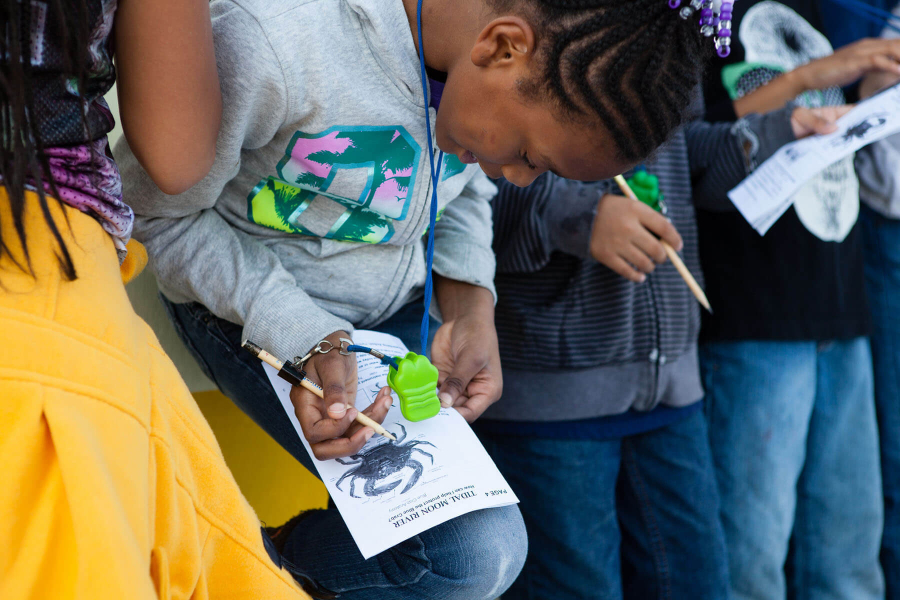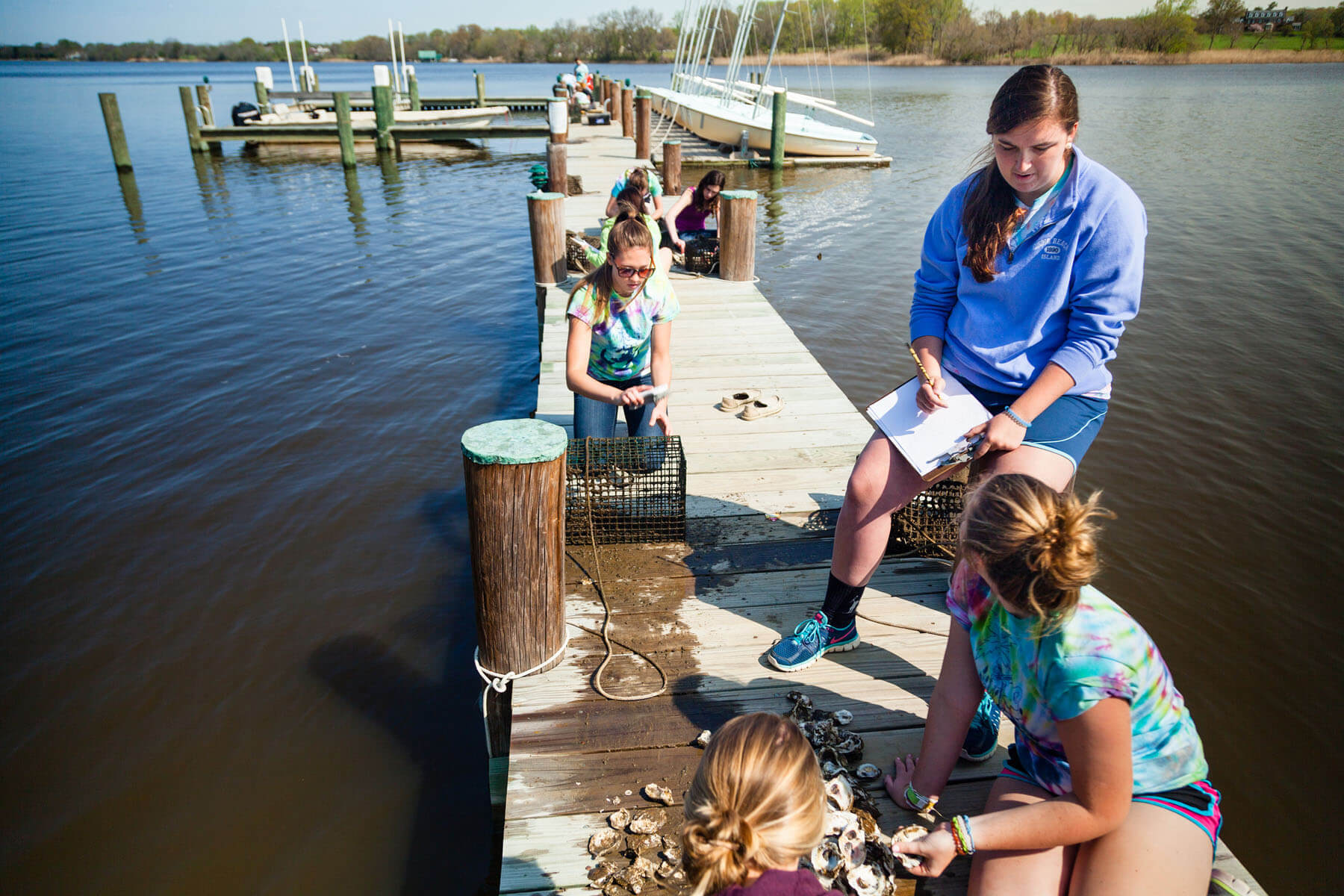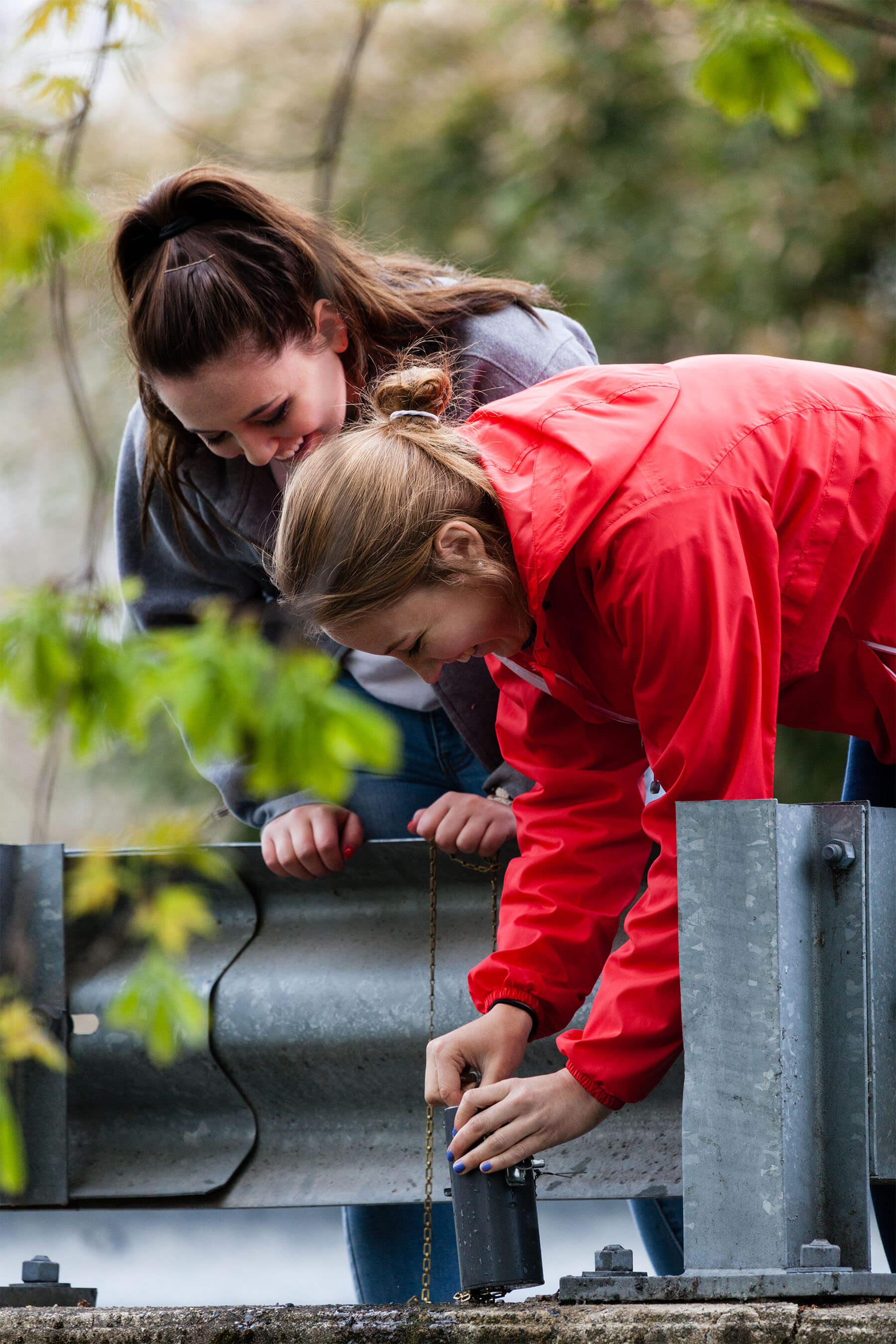Chesapeake Bay Program reports watershed-wide progress toward environmental education goals
Collaboration among leaders in education and environment will be critical to continued growth

Delaware, Maryland, Pennsylvania, Virginia and Washington, D.C., are making progress toward their environmental education goals. Since 2015, school districts within these jurisdictions have reported a slight rise in their preparedness to put environmental education programs in place, as well as an increase in the number of schools that are operating sustainably and a steady level of curriculum-embedded opportunities for students to learn outside.
According to the results of a 2017 Chesapeake Bay Program survey, almost one-quarter of responding school districts in the watershed-portion of Delaware, Maryland, Pennsylvania, Virginia and Washington, D.C., consider themselves well-prepared to deliver high-quality environmental literacy programming to their students. More than one-third of responding school districts indicate their students are engaged in field experiences and outdoor learning through the Meaningful Watershed Educational Experience (MWEEs). More than 600 public and charter schools in these jurisdictions are certified sustainable.
 Students from The Gunston School in Centreville, Md., search shells for baby oysters during an Earth Day celebration. The Gunston School is one of the 503 certified sustainable public and charter schools in Maryland. (Photo by Will Parson/Chesapeake Bay Program)
Students from The Gunston School in Centreville, Md., search shells for baby oysters during an Earth Day celebration. The Gunston School is one of the 503 certified sustainable public and charter schools in Maryland. (Photo by Will Parson/Chesapeake Bay Program)
“States and school districts are working hard to foster the next generation of Chesapeake Bay stewards,” said the acting director of the National Oceanic and Atmospheric Administration’s Chesapeake Bay Office in a media release. “The information that they provided in this survey will help us to direct funding and resources to the places and programs where they will have the most impact.”
When asked to name their highest priority for improving their environmental education programs, survey respondents agreed that funding, teacher training and assistance integrating environmental topics into division curriculum topped the list. Chesapeake Bay Program experts have noted that teachers across the region often lack the training and confidence to provide MWEEs to their students. Competing priorities and changes in leadership at the state and local level can create inconsistent support for environmental literacy, and school staff often perceive the act of seeking sustainable school recognition as daunting in light of their other responsibilities.
As a partnership that brings together government agencies, academic institutions and nonprofit organizations from across the watershed, the Chesapeake Bay Program is uniquely positioned to address these challenges. Earlier this year, the Principals’ Staff Committee committed to biennially convening high-level leaders in both education and the environment to discuss progress toward the partnership’s environmental education goals. In August, Chesapeake Executive Council Chair and Maryland Governor Larry Hogan called on his fellow watershed states to use the data and information collected by the Chesapeake Bay Program to develop strategies to equitably direct their resources toward ensuring all students have access to outdoor learning experiences and a sustainable school environment. The Chesapeake Bay Program will distribute its third environmental education survey to school districts in 2019.
 Students from Warwick High School in Lititz, Pa., take a water quality sample from Lititz Run. Eighty percent of the Pennsylvania school districts that responded to a Chesapeake Bay Program survey indicated at least some of their high school students are engaging in field experiences and outdoor learning through the Meaningful Watershed Educational Experience (MWEE). (Photo by Will Parson/Chesapeake Bay Program)
Students from Warwick High School in Lititz, Pa., take a water quality sample from Lititz Run. Eighty percent of the Pennsylvania school districts that responded to a Chesapeake Bay Program survey indicated at least some of their high school students are engaging in field experiences and outdoor learning through the Meaningful Watershed Educational Experience (MWEE). (Photo by Will Parson/Chesapeake Bay Program)
The Chesapeake Bay watershed is home to 2.7 million students in kindergarten through twelfth grade. Through the Chesapeake Bay Watershed Agreement, Delaware, Maryland, Pennsylvania, Virginia and Washington, D.C., have committed to helping their students gain the knowledge and skills needed to protect and restore their local watersheds. By expanding the number of schools that reduce their impact on the natural world, our partners will benefit student health and allow them an active role in environmental protection. By teaching students to investigate and address environmental issues, our partners will nurture their sense of stewardship and encourage a lifetime of civic engagement. By developing comprehensive policies and practices to support environmental education, our partners will ensure current and future students graduate with an understanding of their relationship with the environment around them.
Learn more about the state of environmental literacy in the Chesapeake Bay watershed.

Comments
Local scientists have recognized how some teachers may not feel comfortable teaching science in the classroom. through innovative and free programs, Fairfax County, VA Stormwater Scientists are trying to bring science to the classroom through a series of award winning programs. Many of these programs are available to other localities. To find out more, visit: https://www.fairfaxcounty.gov/publicworks/stormwater/watershed-education-and-outreach
Thank you!
Your comment has been received. Before it can be published, the comment will be reviewed by our team to ensure it adheres with our rules of engagement.
Back to recent stories